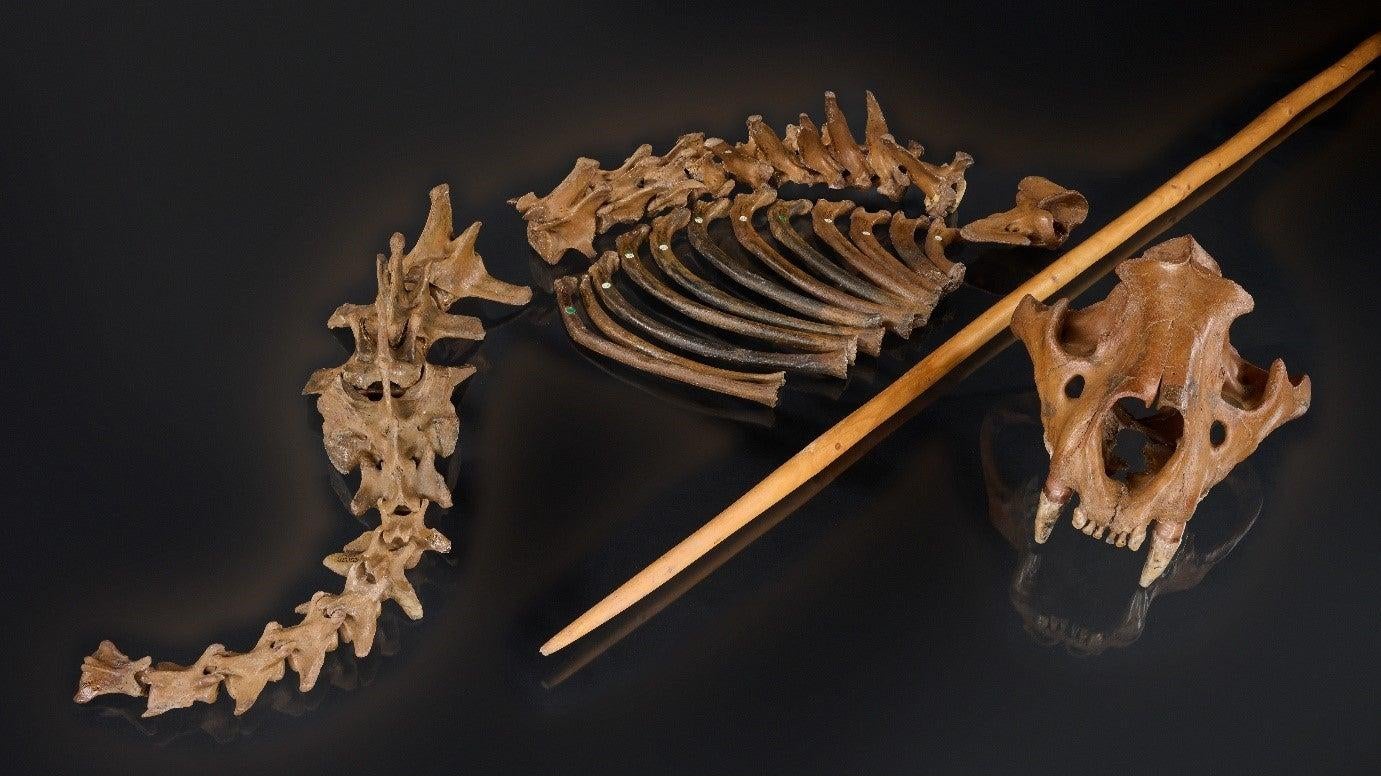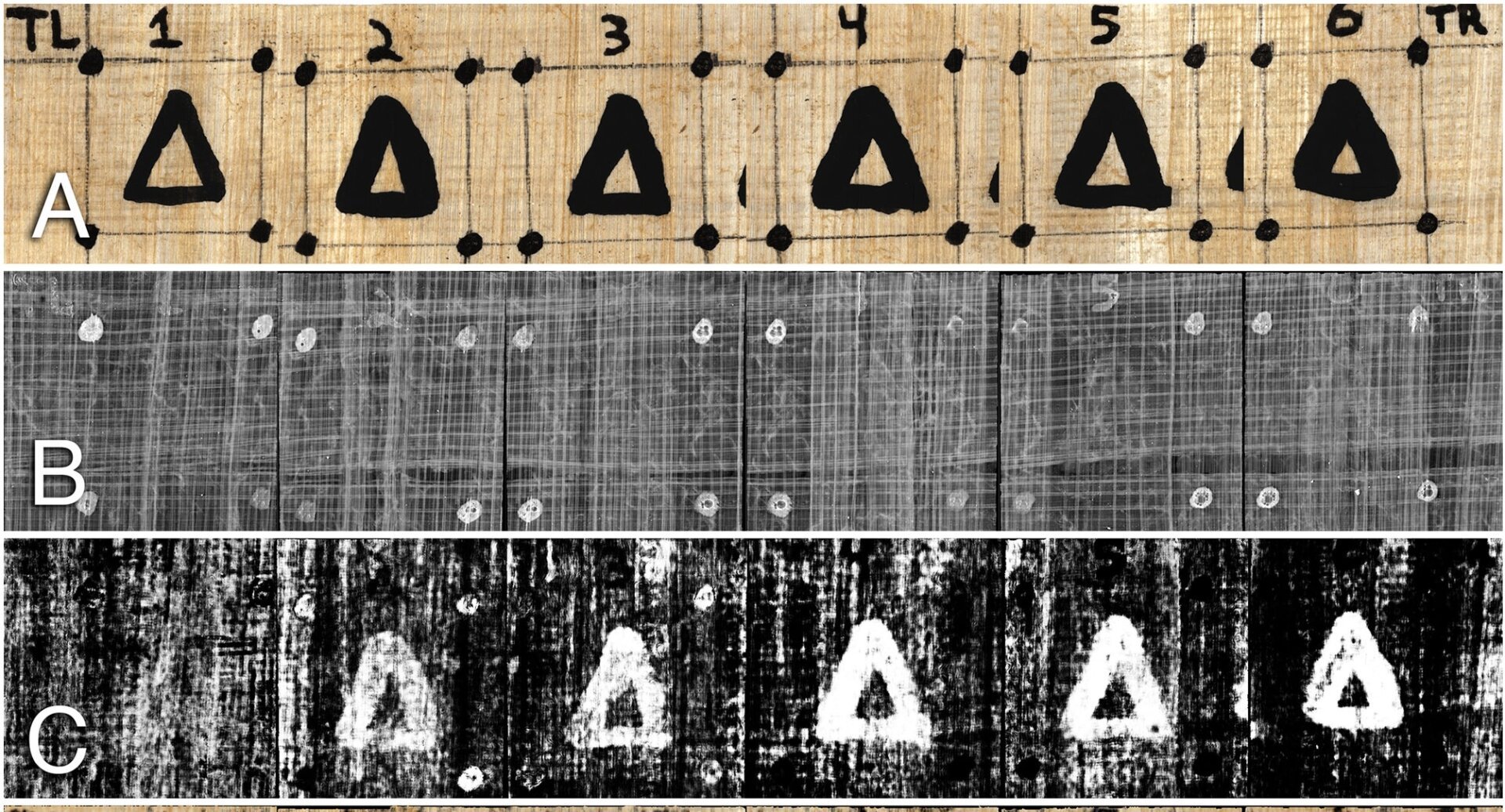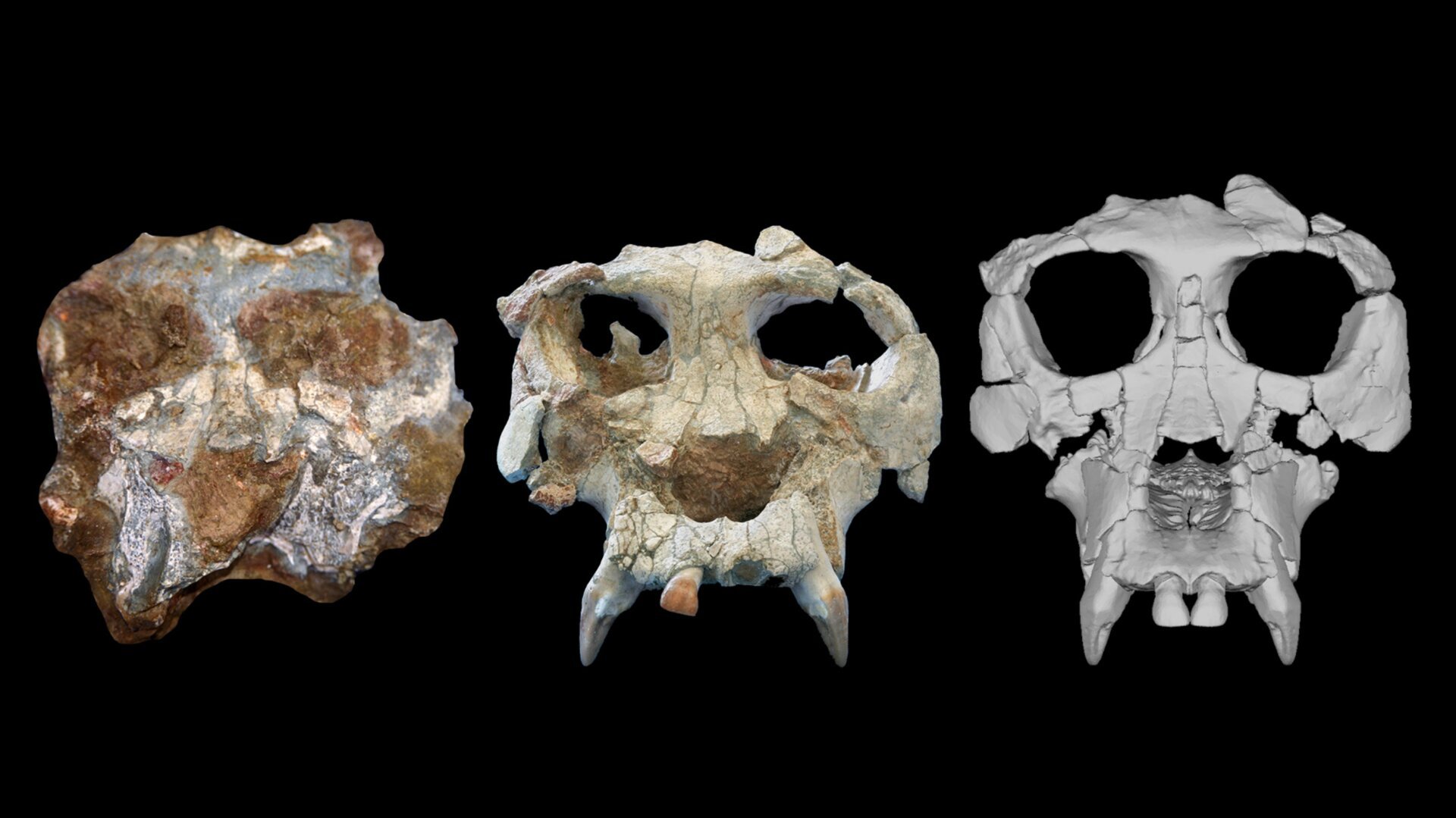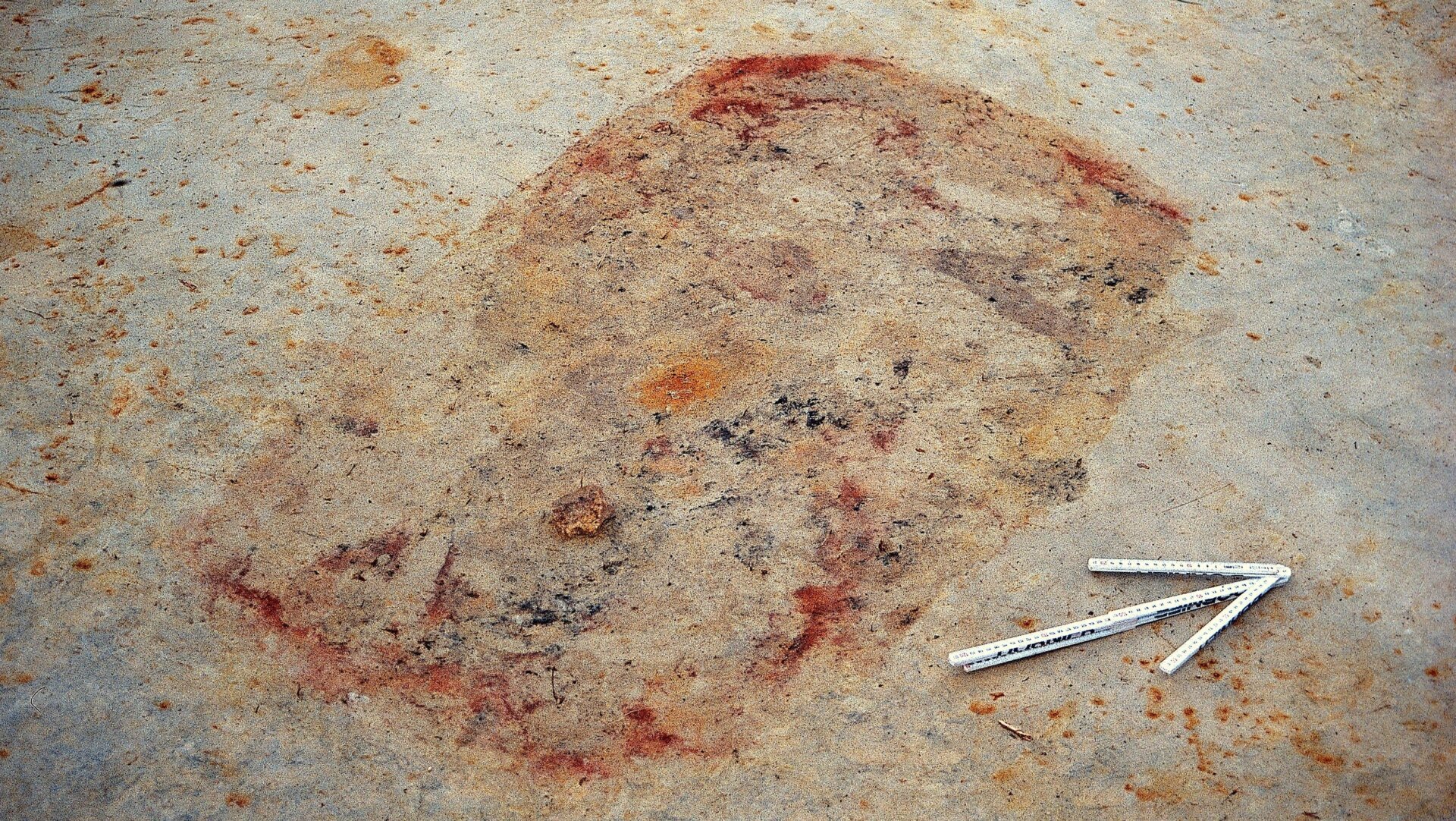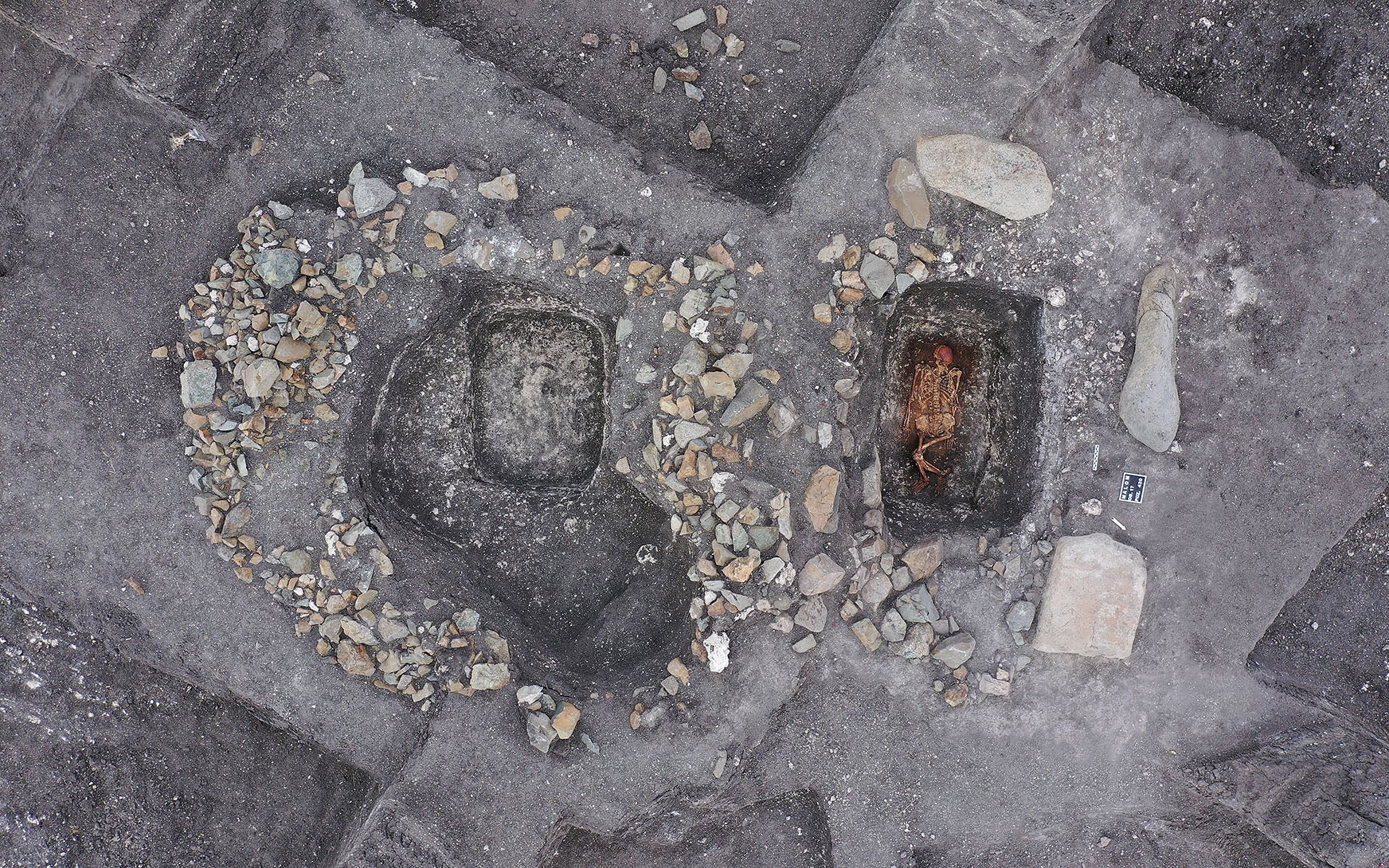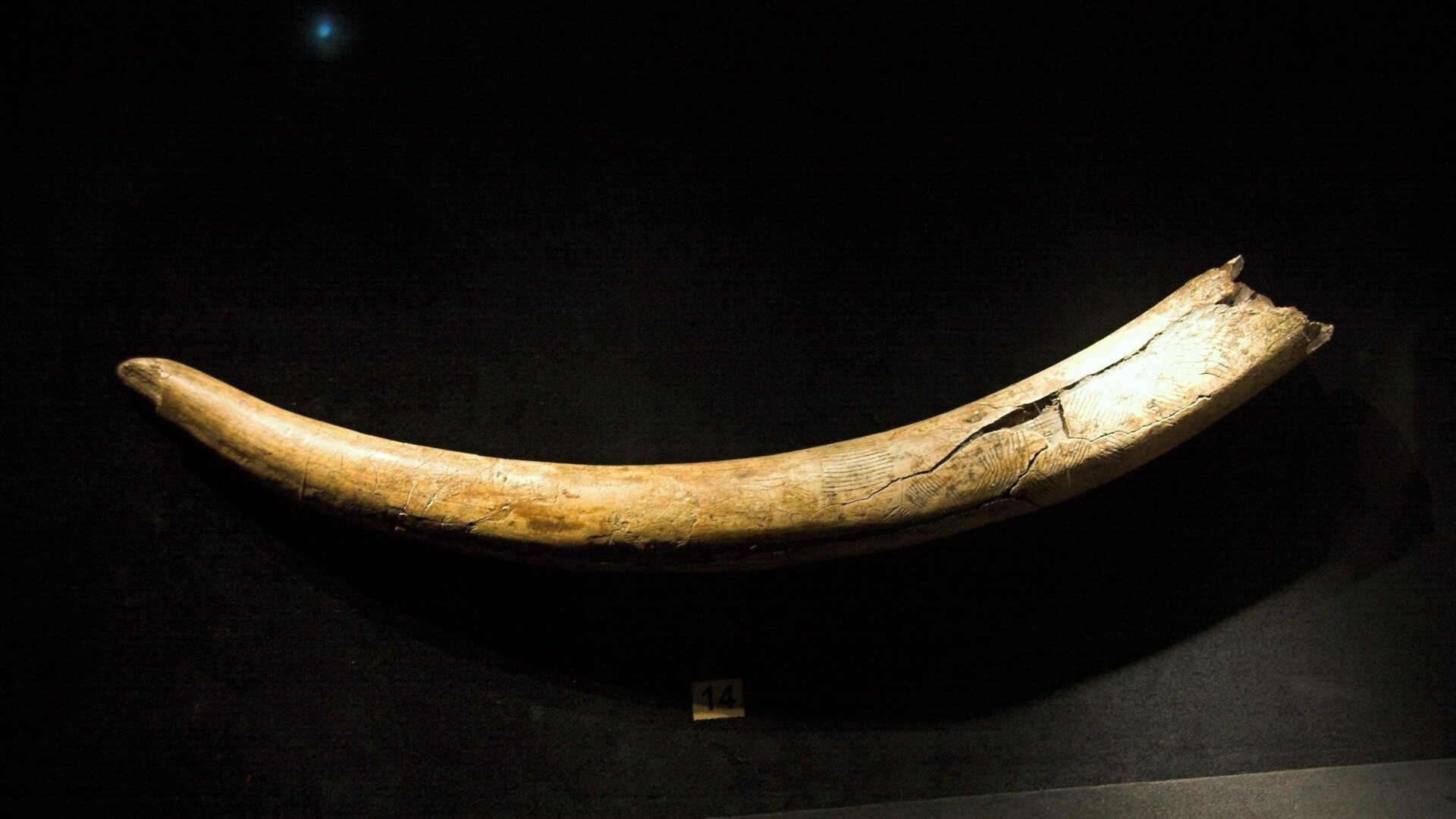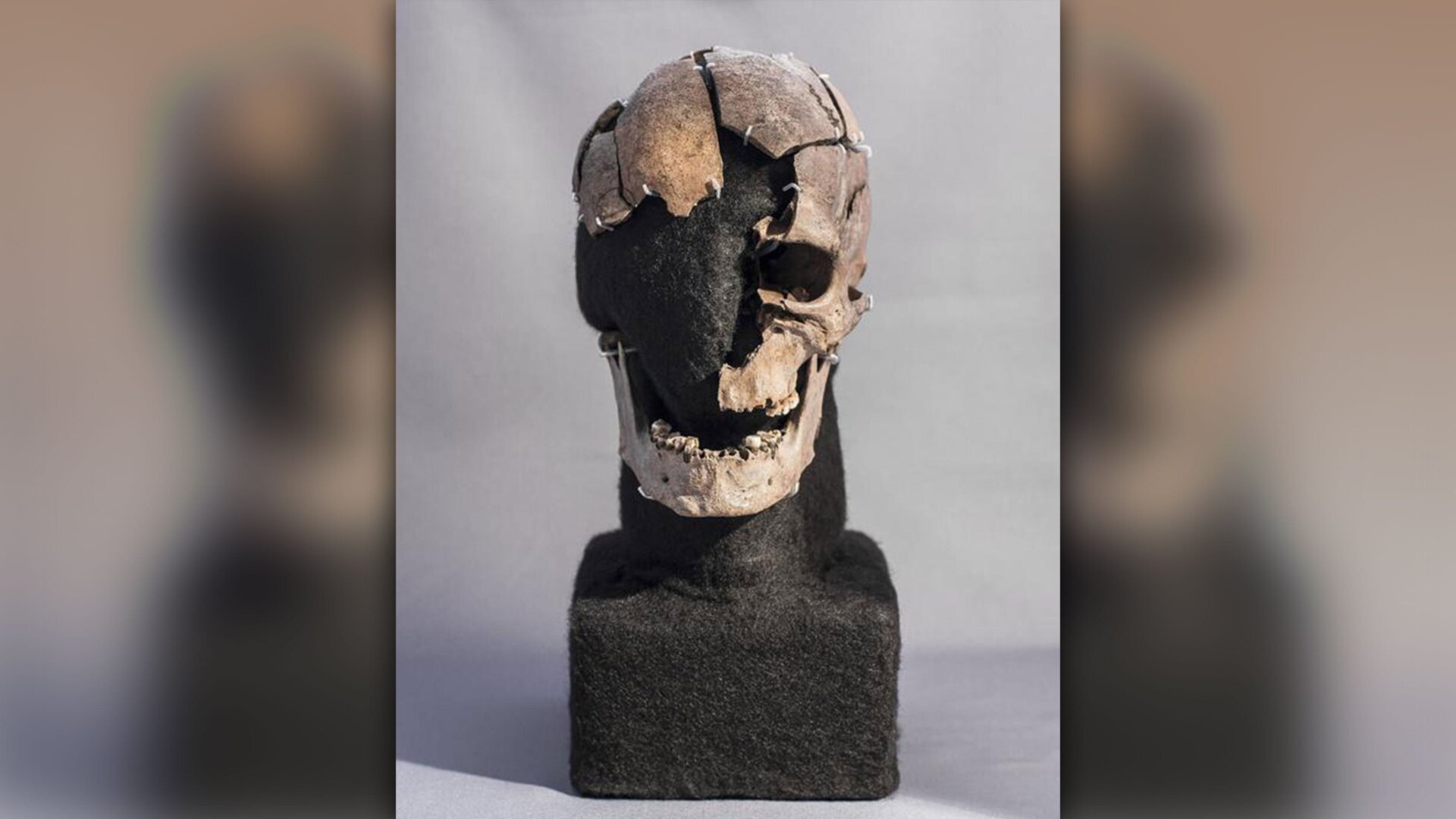The remains of a 48,000-year-old cave lion skeleton unearthed in Siegsdorf, Germany, bear distinct marks suggesting it was killed by Neanderthals. This discovery provides the first concrete evidence of our closest human relatives hunting these formidable Ice Age predators.
A recent study published in Scientific Reports examined the Siegsdorf skeleton alongside phalanges and sesamoid bones from three other cave lions excavated from Einhornhöle, Germany, in 2019. The Siegsdorf skeleton displays a puncture wound consistent with a wooden-tipped spear, a weapon known to be used by Neanderthals. The other bones show cut marks indicating careful butchery, likely to preserve the claws attached to the pelt.
Neanderthal Interaction with Cave Lions
This interaction with cave lions reveals a significant aspect of Neanderthal life. It demonstrates their active engagement with their environment, including confrontations with apex predators. These encounters extended beyond mere resource utilization to encompass potential cultural practices involving lion body parts. According to Gabriele Russo, a paleoanthropologist at Eberhard Karls University of Tübingen and the study’s lead author, this signifies a profound understanding of their ecosystem and the ability to exploit even the most dangerous animals within it. The absence of Homo sapiens or other hominins in the region at the time strengthens the case for Neanderthals as the sole actors in these events.
Evidence of Early Lion Butchery and Skinning
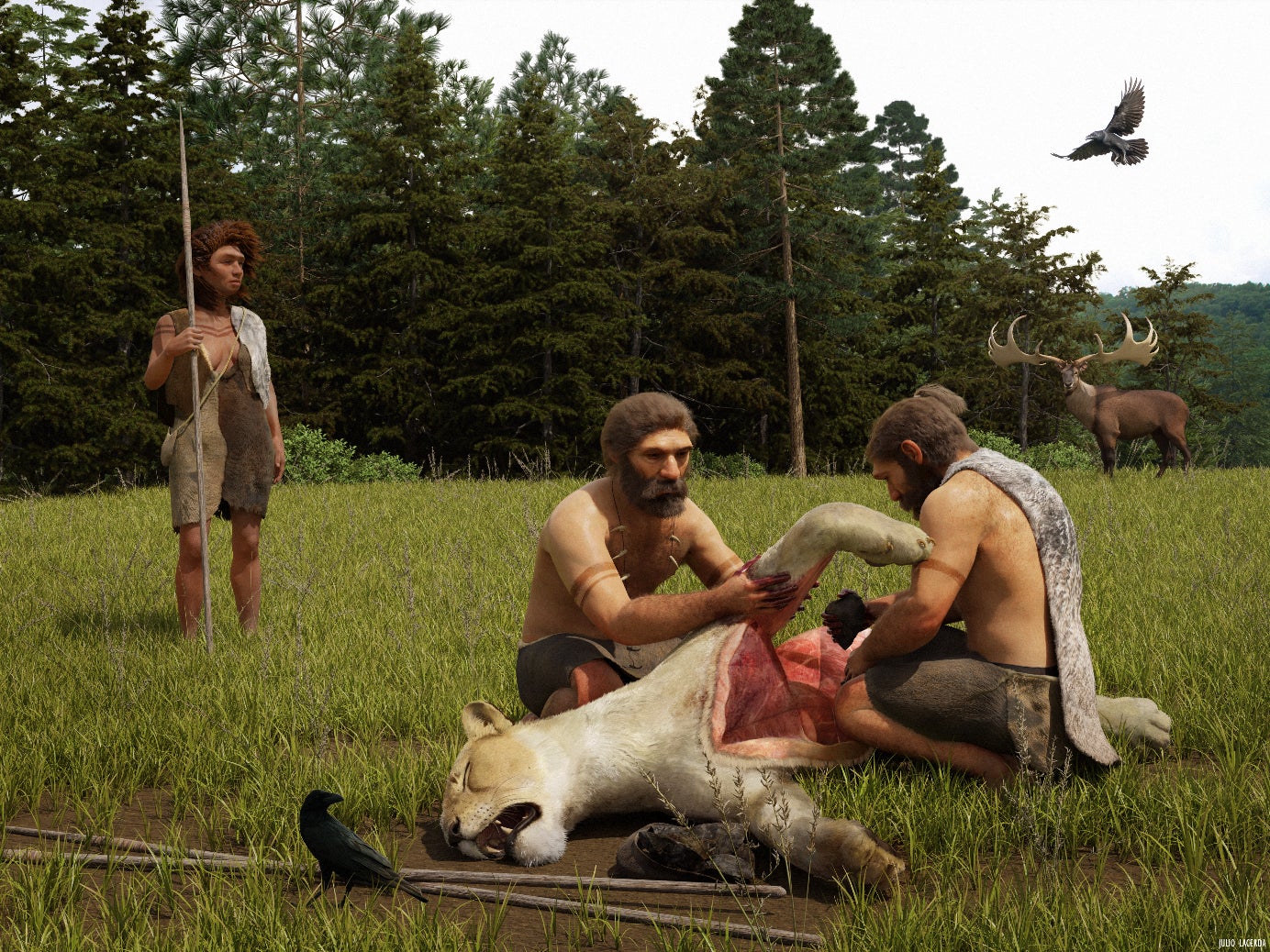 An artist’s impression of Neanderthals butchering a freshly killed cave lion.An artist’s impression of Neanderthals butchering a cave lion. Illustration: Credit: Graphics by Julio Lacerda. ©NLD
An artist’s impression of Neanderthals butchering a freshly killed cave lion.An artist’s impression of Neanderthals butchering a cave lion. Illustration: Credit: Graphics by Julio Lacerda. ©NLD
While evidence of human interaction with lion remains dates back as far as 350,000 years ago in Spain, showcasing butchery and potential skinning, clear evidence of hunting lions has been elusive. This new study provides compelling evidence for active predation. Moreover, the preservation of claws with the pelt suggests a potential ornamental or symbolic use, rather than solely for practical purposes like obtaining meat.
Neanderthals: Pioneering Cultural Relationships with Predators
The phalanges from Einhornhöle are significantly older than the Siegsdorf skeleton, dating back at least 190,000 years. This represents the earliest known instance of Neanderthals using cave lion skin in Central Europe. Although no complete pelt was discovered, the implication of cultural use aligns with other evidence of Neanderthal symbolic behavior, such as the 51,000-year-old carved bone of a giant deer attributed to them. This artistic expression, along with evidence of collaborative hunting, care for the sick and injured, and cave paintings, paints a picture of a culturally complex hominin species.
The Symbolic Significance of Cave Lions
The researchers posit that cave lions held symbolic or aesthetic significance for Neanderthals, beyond the practical value of their meat and hides. This challenges previous assumptions that such complex relationships with predators were exclusive to Homo sapiens. Russo emphasizes that Neanderthals were the first hominins to demonstrate this level of interaction, establishing a precedent for cultural engagement with apex predators. This discovery further solidifies the understanding of Neanderthals as sophisticated beings capable of complex thought and symbolic behavior.
Conclusion
The evidence from the Siegsdorf and Einhornhöle sites reveals Neanderthals as skilled hunters of cave lions, capable of utilizing these powerful creatures for both practical and potentially symbolic purposes. This sheds new light on their complex relationship with their environment and expands our understanding of Neanderthal culture. This finding challenges previous assumptions about the unique capabilities of Homo sapiens and highlights the sophisticated nature of our closest extinct relatives.



